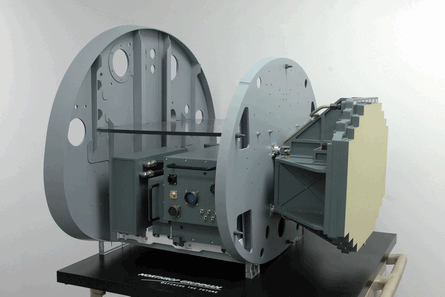Northrop Grumman expects the final word from the US Air Force on a possible radar upgrade for its Lockheed Martin F-16s within a few months.
Northrop has developed and tested the scaleable agile beam radar (SABR) to compete with the Raytheon advanced combat radar (RACR) for the contract.
Both companies invested in active electronically scanned array technology for the F-16 with the expectation of USAF orders, but the service has not yet confirmed an approved need or funding to upgrade the mechanically scanned Northrop APG-68.
"We have been anticipating something out of these guys for the last couple of months and it's still right on the edge of their tongue," says Dave Wallace, Northrop manager for F-16 sensor programme development. "We'd be expecting to see something early next year, if not sooner."
 |
|---|
© Northrop GrummanSABR scaleable agile beam radar |
Northrop installed SABR on an F-16 Block 50 last year. Flight tests demonstrated the air-to-air mode and a range of broad and narrow modes within the air-to-ground synthetic aperture radar mode, says Wallace.
USAF officials recommended making changes to the pilot vehicle interface, which Northrop has done, he adds.
Raytheon disclosed recently that it had completed tests on the same F-16 in July and August, and expects to submit its findings to the USAF this month.
Both companies have invested heavily in the F-16 radar retrofit programme ahead of a customer commitment. The USAF has been conducting a service life assessment programme on the F-16 fleet to determine how long the aircraft will remain viable.
"I think the air force is looking to extend the capability and life of its airplanes," says Wallace.
While Raytheon touts the RACR's links to the APG-79 AESA installed on the Boeing F/A-18E/F Super Hornet, Northrop traces the SABR architecture to the APG-80 agile beam radar on the F-16 Block 60 and the APG-81 on Lockheed's F-35 Joint Strike Fighter.
"We will update SABR with everything the F-35 gets," says Wallace. "If you update the F-35, and [if] the F-16 needs an update as well, essentially all you do is host it on the F-16 architecture and test it, and we are arranging for that to work."
The USAF decision could also influence the foreign market. Northrop and Raytheon have received US export licences to market the F-16 AESA products to foreign militaries. Wallace adds: "It's tough to determine whether or not they would go before a US Air Force decision has been made. If I had to handicap, at best it's simultaneous."
Source: Flight International
















